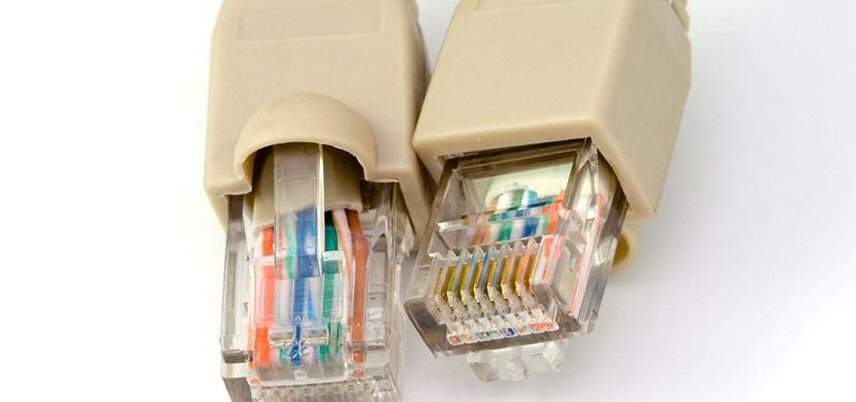Life begins at 40: how Ethernet’s future could be even more golden than its past

Ethernet has become not just the dominant standard, but the universal technology of local area networking.
If you plug a networking cable in at work or at home, it’s almost certainly going to be using Ethernet. Over its 40-year history, Ethernet has risen from contender to unopposed winner in the LAN.
But its abilities now stretch well beyond the building at hand. In this feature we look at how Ethernet is far from having a mid-life crisis now that it’s past 40 and could be about to enter an even more dominant era than it has enjoyed over the last few decades.
Ethernet origins
Like so many great computing technologies we have come to take for granted and use on an everyday basis, Ethernet has its origins in the legendary Xerox Palo Alto Research Center (PARC).
Taking his inspiration from a 1970 paper about a packet-switching radio system called ALOHAnet, Robert Metcalfe built the first prototype Ethernet system at Xerox PARC, which went live on November 11th, 1973. It connected more than 100 workstations at 2.94Mbits/sec, using 1km of cable. Xerox then patented the concept in 1975.
Seeing the potential of the technology in 1979, Metcalfe left Xerox PARC to found 3Com and convinced Digital Equipment Corporation, Intel and Xerox to back the nascent Ethernet standard, resulting in the IEEE 802.3 specification in 1983, which also increased the default speed to 10Mbits/sec.
However, Ethernet was competing at this time with Token Bus and Token Ring. These were initially proprietary, but ended up being standardized as IEEE 802.4 and 802.5 respectively. So Ethernet’s dominance was far from an inevitability when it first arrived on the market.
Nevertheless, Ethernet had considerable advantages over both competitor technologies. Token Ring adapters were three times the price of Ethernet adapters, and later in its development Ethernet could operate over cheap unshielded twisted pair Cat 3 cabling, where both Token Ring and Token Bus required more expensive shielded coaxial wiring.
Token Bus also had a reputation for being unreliable and hard to upgrade. Although Token Ring reached 16Mbits/sec, compared to Ethernet’s 10Mbits/sec at the time, 3Com’s Ethernet adapter for the IBM PC had sold 100,000 units by 1985, just three years after its release.
The arrival of switched Ethernet, full duplex modes, and Fast Ethernet further increased the lead over Token Ring and Token Bus. Although 100Mbit/sec versions of Token Ring were marketed, Ethernet had all but taken over by the end of the 1990s.
The arrival of Gigabit Ethernet, fiber optic variants, and speeds up to 100Gbits/sec for backbone usage now mean that there is no competition for corporate networking and the ubiquity of the network hardware on PCs and Macs makes Ethernet the default wired option in the home as well.
Going long distance
So Ethernet has risen to complete dominance for local area networks over its forty years of existence, although its commercial availability is a decade younger than that.
However, whilst fiber optic connections have also been available for the transmission of Ethernet over considerable distances for nearly two decades, the technology remained primarily focused on connecting up systems within a single facility, rather than being called upon for the links between facilities, or the wider Internet. Instead, specialized alternative technologies have traditionally been called upon for connections over longer distances. But these have added cost and complexity to the networking system, giving Ethernet a potential opportunity here as well.
Ethernet has always had the ability to communicate over reasonably large lengths of wiring, with even the very first prototype using 1km of copper cabling. Although Gigabit Ethernet over copper twisted pair cabling is only specified for 100m between links, fiber optic versions have allowed Ethernet to run over single connections up to 70km each.
The potential for connecting wider areas than the local with Ethernet has therefore been obvious for some years, hinting at its ability to eliminate non-native transport layers for a simpler, faster, more streamlined connection. To this end, in 1996 Nortel Networks introduced its EtherLoop technology, providing a peak of 10Mbits/sec at up to 3.7km over standard telephone wiring.
Further proprietary technologies arrived from companies such as Fibrehood Networks, as well as 10BaseS from Infineon Technologies, and Long Reach Ethernet from Cisco.
But the disparate nature of these technologies needed unification, and this led to the creation of the Ethernet in the First Mile (EFM) study group in October 2000, which formed the 802.3ah working group, resulting in the IEEE 802.3ah-2004 standard.
Running in parallel to this, the Metro Ethernet Forum (MEF) was founded in 2001 to promote standards-based Ethernet beyond the local area, and with the publication of IEEE 802.3ah-2004 the Ethernet in the First Mile Alliance (EFMA) also became part of the MEF in 2005. Since then, the MEF has become the primary body championing Ethernet technology beyond the LAN.
Carrier development opportunities
To date, the MEF has approved over 30 technical specifications. However, these specifications have been grouped together into two primary standards, which broadly define two phases in the development of Ethernet as a generic high-bandwidth connectivity option for wide area networks, metro area networks, and Internet links. These are Carrier Ethernet versions 1.0 and 2.0.
The former was launched in 2005 and aimed at enabling standardized services to be delivered over one provider’s network; whilst the latter arrived in 2012, adding specifications for delivering multiple classes of service and manageability over interconnected provider networks.
The distinction between the two standards is significant. Whilst Carrier Ethernet 1.0 allowed a company to link two distant premises over one provider’s infrastructure, any location outside the reach of that provider’s cabling would not be able to receive the service. So Carrier Ethernet 2.0 introduced a suite of technologies that allow services to be provided that span the infrastructure of multiple vendors, greatly expanding the flexibility and reach of Ethernet.
The types of service and manageability introduced with Carrier Ethernet 1.0 were aimed at single-provider networks. The two main service types for Carrier Ethernet 1.0 are called E-Line and E-LAN.
The former defines point-to-point connections, whilst the latter defines multipoint-to-multipoint connections. There are virtual versions of both, so that multiple networks can reside on the same infrastructure without being accessible to each other. An E-Line connection can be used for Internet access, so long as the infrastructure provider has the gateway on its cabling network, and E-LAN can be used for multicasting of audiovisual content, as well as more general-purpose multipoint networking.
The management systems defined in Carrier Ethernet 1.0’s MEF 7 and 15 standards are focused on setting up and maintaining these kinds of single-vendor networks. All these facilities made Carrier Ethernet 1.0 great for metro or regional areas served by one infrastructure provider, or for use as mobile backhaul for a single provider, but the wholesale of Ethernet access services wasn’t an option.
The big addition with Carrier Ethernet 2.0 is the new E-Access service type. Unlike E-Line and E-LAN, E-Access is not about the topology of how customers connect their individual locations, but enables those connections to run across the infrastructure of multiple vendors. Multiple classes of service (Multi-CoS) can be defined, so that bandwidth- and latency-sensitive data types may be prioritized over those that are less sensitive. The manageability features have been expanded, via the MEF 16, 17, 30, and 31 standards, such that the connection can be set up, monitored for performance and faults, and any issues pinpointed and fixed across the multiple vendor networks it traverses.
Combining all these new features together, Carrier Ethernet 2.0 allows services to be provided on a wholesale basis, so multiple vendors can offer connectivity across an infrastructure provider or multiple providers. The E-Access service type preserves the service level agreement across the various vendors involved, so customers can be confident that they get what they are paying for, with the management features ensuring that the provider can monitor and maintain the SLA.
Carrier Ethernet 2.0 also defines a new E-Tree service type, which is another flavor of multipoint connection, but this time using a rooted hub-and-spoke model where the spokes can’t access each other, only the hub. This further accentuates the appropriateness of Ethernet as an interconnect for audiovisual subscriber services, such as cable TV.
However, it’s the E-Access feature and its supplementary Multi-CoS and management facilities that make the most significant difference. By opening up the ability to run a Carrier Ethernet service across multiple vendors, the footprint of where the service can be provided is extended to combine all contiguous infrastructure networks into one area of coverage.
So instead of merely offering metro and regional networking, national and global networks can potentially be provided as well.
Ethernet’s golden future
Ethernet has already enabled multiple generations of high-bandwidth, low-cost, standards-based connectivity for businesses, and Carrier Ethernet 1.0 and 2.0 have widened the reach beyond the LAN.
But this is just the beginning. Faster Ethernet bandwidth is constantly on the horizon, with 100Gbit Ethernet standardized in 2010 and 2011, whilst 400Gbit and 1Tbit Ethernet are under consideration. Future Carrier Ethernet standards will aim to further simplify automated service delivery, enabling even greater possibilities to provide Ethernet connectivity as a commodity.
This will particularly benefit cloud service provision, via responsive, elastic characteristics. In other words, rather than contemplating a radical change of lifestyle in its forties, or even early retirement, Ethernet is facing even wider adoption and greater ubiquity.
This article was originally published on IT Pro Portal.
Ethernet has become not just the dominant standard, but the universal technology of local area networking. If you plug a networking cable in at work or at home, it’s almost certainly going to be using Ethernet.
Locked Content
Click on the button below to get access
Unlock NowOr sign in to access all content on Comcast Business Community
Learn how Comcast Business can help
keep you ready for what's next.











